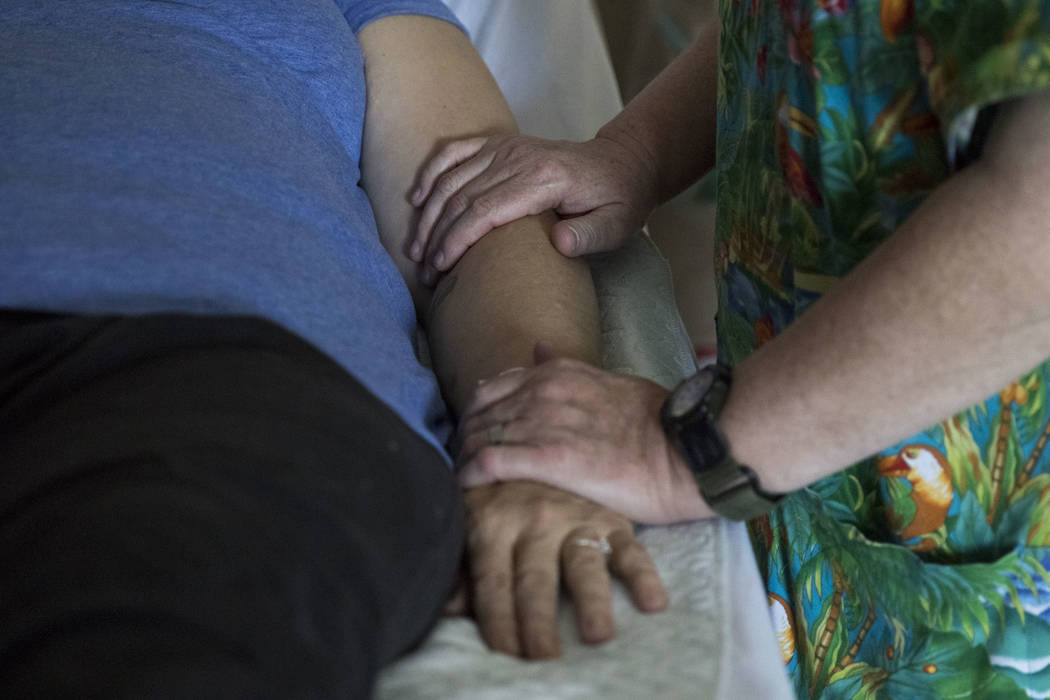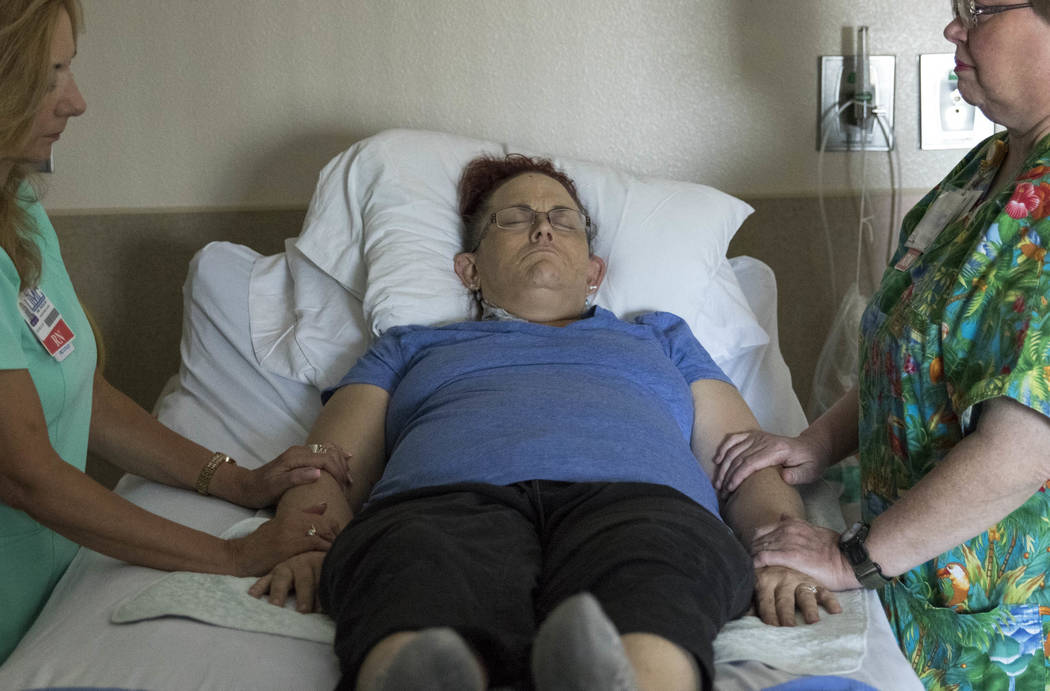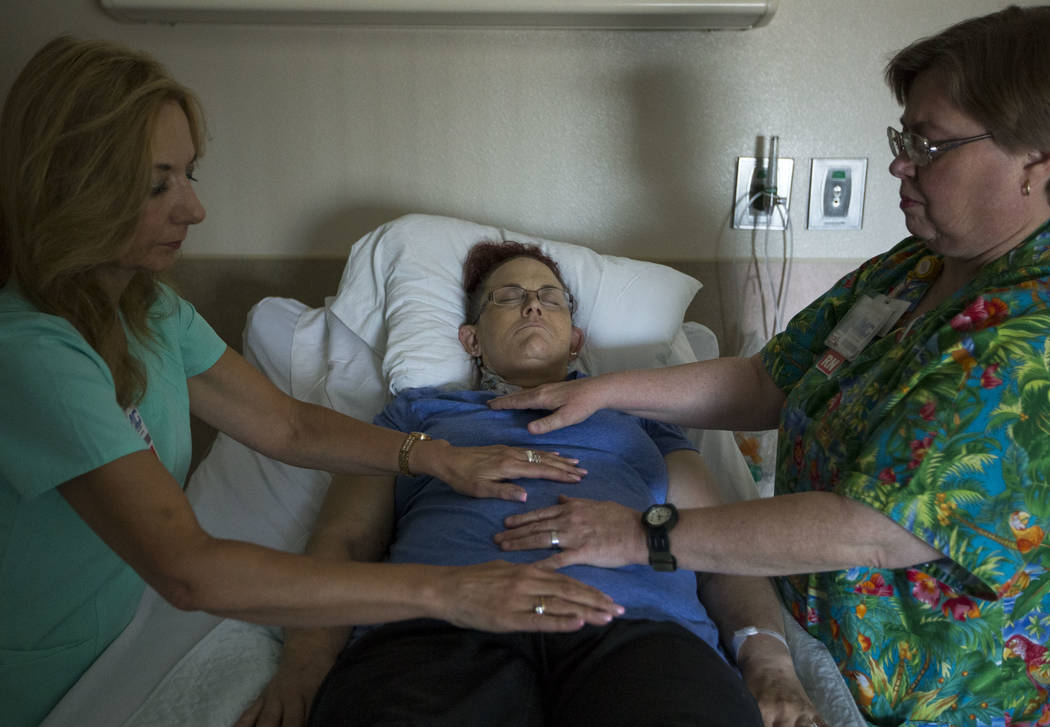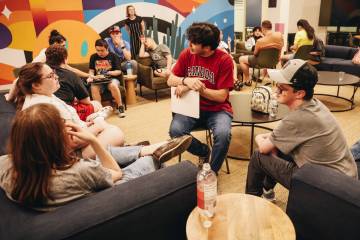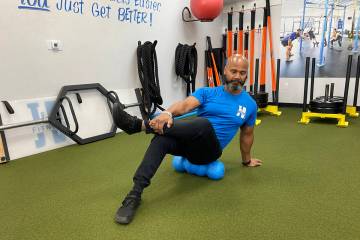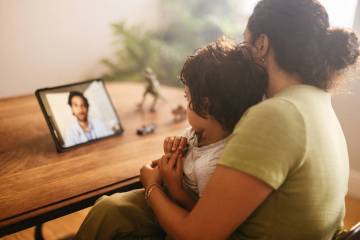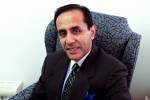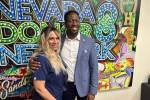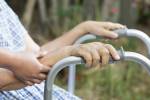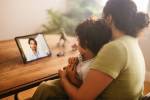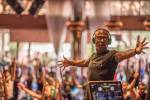The power of touch helps Las Vegas woman deal with illness
Although she’s in University Medical Center for treatment, 43-year-old Therese Jones still finds it hard to believe she was found to have a cancer that’s spread to her bladder.
Her eyes brim with tears as she tells me how a seemingly small problem urinating led to the most frightening time of her life. Radiation and chemotherapy have left her nauseated and, oh, so tired.
“I think I’m in denial,” she sobs, holding her head in her hands. “How could this happen? I wasn’t even feeling that bad.”
A bright spot in her eight days at the hospital, she says, has been the attention given her by UMC nurses Michelle McGrorey and Deborah McKinney, who have come to her room with a practice known as Healing Touch, a treatment not yet part of mainstream medicine, one referred to as complementary medicine by the National Institutes of Health.
“It feels so good to be touched,” Jones says. “I love to be around my parents, but they’re ill. I miss people touching me. You need to be touched, you know. ”
Studies have long shown that babies can’t thrive without touch. Jones argues adults can’t either.
The treatment McGrorey and McKinney offer was on display later that morning in Jones’ room. Not long after an upbeat greeting, they dimmed the lights and put on soothing music, much like what people find when receiving a massage.
For about 30 minutes they silently swept their hands over Jones as she lay on her back, frequently stopping to touch her for as much as a minute at different parts of her fully clothed body.
“I feel so much better — so relaxed, no nausea,” Jones says, as the nurses begin to leave.
Tapping inner energy
As the nurses sat in their office, they explained they were performing what is known as energy medicine. What they’ve been trained to do, they said, can influence the energy within and around a person’s body.
Illness, they say, disturbs these fields of energy. They believe what they do helps restore balance.
“I know it seems weird but it works,” McKinney says of the practice founded in 1989 by the late Colorado registered nurse Janet Mentgen. “Our patients love it.”
The NIH notes that human energy fields, also called biofields, can’t be measured by any reproducible, biophysical means. Some scientists call Healing Touch quackery, and the practice is in the “Skeptics Dictionary.”
But UMC’s assistant chief nursing officer Margaret Covelli notes that from 2005-2011, the share of hospitals using it in the U.S. has jumped from 26 percent to 42 percent.
Limited patient studies suggest Healing Touch is effective in dealing with pain and anxiety.
“Studies have shown it relaxes people much like giving them a muscle relaxant,” Covelli says. “Given the problem, we now have with opiates in this country, it’s an important noninvasive treatment to have. I do know that once our patients know we have it, they request it. We use it with some of our most seriously ill patients.”
McKinney showed how patients rated pain and anxiety before and after a Healing Touch visit at UMC. In every case, pain and anxiety levels rated above “5” dropped to either “0” or near. Jones says the effects of Healing Touch last a day.
In April, UMC became the first and only hospital in Las Vegas to formally endorse Healing Touch, actually making it the job of McGrorey and McKinney to bring the practice to patients, who are often referred by doctors. There is no cost for the program. The nurses also use aromatherapy in their practice and plan to make pet and music therapy part of a UMC Integrated Therapy Department.
McGrorey used oils with orange fragrance on her hands during the visit with Jones because orange is thought to create a positive, uplifting feeling.
Trauma surgeon Dr. Jay Coates, who heads UMC’s burn center, loves the complementary medicine program.
‘Patients improve with it’
“It definitely makes a difference with my patients — it calms them down, gives them a better attitude, helps them not want to give up,” he says. “I know patients appreciate a gentle touch, being the center of attention. I have burn patients who some people are afraid to get close to because of their appearance, and what these nurses do gives them hope. When it comes to the energy fields the nurses talk about — it seems on the outer fringes — I’m not sure I understand that or how it could ever be measured. What I do know is that patients improve with it.”
In many cultures, energy fields are based on the concept that humans have a subtle force of energy or vital force. It’s known as “qi” in traditional Chinese medicine, “ki” in the Japanese Kampo system. Although it can’t be measured by conventional instrumentation, therapists say they can work with this energy, and use it to effect changes in health.
“You can be certified to do it,” said McGrorey, who had an $80-an-hour private practice in Healing Touch outside the hospital before UMC adopted the program. “I actually felt heat over Ms. Jones’ pelvic area, where she is having her problems.”
Paul Harasim’s column runs Monday in Health. Contact him at pharasim@reviewjournal.com or 702-387-5273. Follow @paulharasim on Twitter.
Becoming certified
Certification of Healing Touch practitioners began in 1993, administered by American Holistic Nurses Association.
Although nursing professors at UNLV and Nevada State College are aware of Healing Touch, neither school has classes helping nurses earn certification. But Neal Rosenburg, dean of Nevada State's nursing program, and LaTricia Perry, who directs it, both say they encourage students to earn certification.
"It's something more they can do that's worthwhile for the patient," Perry said. "People respond positively to human caring."





